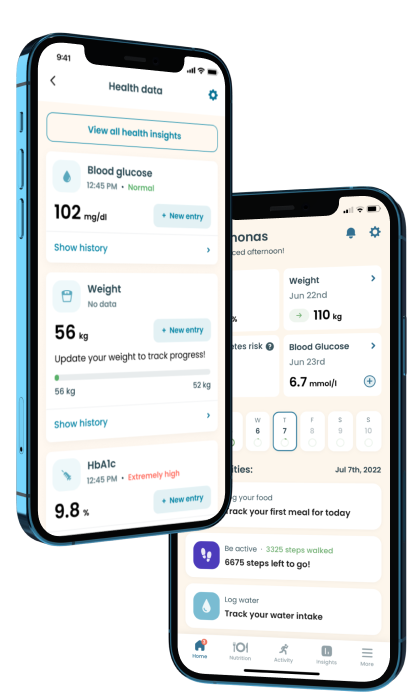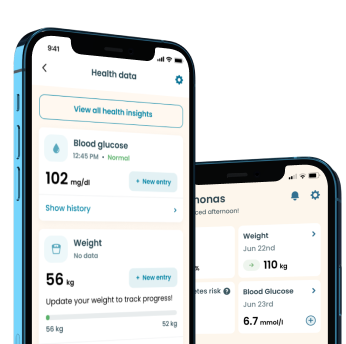Pawpaw and Diabetes

Some people rely on medicine to control their blood sugar levels, while others lean towards exercise and a nutritious diet. Although fruits are a vital constituent of a balanced diet, some fruits have more natural sugars than others. As such, its excessive consumption may cause blood sugar issues.
However, does this apply to pawpaw as well? The popular opinion is that since pawpaw is a fruit, it should be safe for diabetic health. But does scientific research justify this opinion? To clarify this mystery, we’ll draw insights from available research papers and clinical trials on pawpaw and diabetes.
Nutritional Profile of Pawpaw
Before concluding on whether pawpaw is a diabetes-safe food or not, let’s examine its nutrient content. According to the USDA, consuming one small-sized pawpaw offers a considerable 67.5 cal. While this may be relatively high, its low-fat content of 0.4 g compensates for this. However, it still has a relatively high carb content of 17 g, so you might want to eat it with discretion.
Although pawpaw presents a considerably high sugar content of 12.3 g, it still boasts a decent fiber content of 2.67 g, which may help you stay filled for extended periods. Pawpaw also has a moderate glycemic index (GI) of 60 and a low glycemic load of 10. This means it might still cause unusual spikes in your blood sugar levels, except when eaten in moderation. In addition, this fruit contains reasonable amounts of vitamin C and A, potassium, and other minerals.
Take a quiz
Discover what Klinio app can do for you
Healthy diabetes meal plan crafted just for YOU

Personalized workouts with no equipment needed

Track your progress with smart tracking tools

What Effect Does Pawpaw Have On Diabetics?
Pawpaw’s sugar content may raise eyebrows as regards its suitability as a diabetes-friendly food. However, research proves that its proven health benefits might just overshadow this con. Let’s observe some of the most important ones.
Hypoglycemic Function
Pawpaw is proven to offer blood sugar-lowering effects in certain studies. Notably, one 2011 research conducted on streptozotocin-induced diabetic albino rats found unripe pawpaw pulp to significantly lower plasma blood glucose levels three and five weeks after administration. Remarkably, the same rats supplemented with unripe pawpaw pulp presented considerable weight loss.
Further studies on pawpaw indicate that its leaves also exert remarkable hypoglycemic properties. These extracts were found to aid pancreatic islet regeneration, prevent lipid and glycogen accumulation while hindering hepatocyte disruption. Other beneficial effects include decreased cholesterol, triacylglycerol, and aminotransferase levels. All of these contribute towards the blood sugar-regulation effect of pawpaw and an overall improvement in diabetes management.
High Antioxidant Content
Antioxidants are essential in the diet of people living with diabetes because of their ability to reduce free radicals in the body and subsequently decrease the risk of diabetes complications. Flavonoids are antioxidants contained in various fruits. Notably, it’s present in the fruits and leaves of pawpaw.
Studies on the anti-diabetic effects of flavonoids prove that these antioxidants enhance the regulation of carbohydrate digestion, insulin secretion and signaling, fat deposition, and glucose uptake. Another study on 200,000 American diabetic patients found that a high intake of anthocyanins—a type of flavonoid—reduces type 2 diabetes risk.
Other Effects
The high blood level of diabetics makes them prone to certain infections, such as those of the foot, that manifest as ulcers. Namely, by causing a thickening of arteries and capillaries in the vascular system, high blood sugar content disrupts the normal vasodilatory response to injuries. Thankfully, pawpaw is known to exert impressive fibrinolytic and antibiotic properties when applied topically, mainly due to its papain content — an enzyme derived from unripe papaya pulp latex that may promote enzymatic wound debridement.
How to Safely Eat Pawpaw as a Diabetic
Pawpaw is high in antioxidants, nutrients, and vitamins, which help prevent cancer and bone fractures, among other ailments. However, like every other high GI fruit, its inappropriate consumption may yield unhealthy results. In light of this, here are some relatively healthy ideas on how you can eat this fruit if you have diabetes:
- Papaya avocado salad
- Papaya quinoa
- Black beans and rice with red onions and papaya
- Tropical papaya smoothie
- Green papaya salad
Summary
Research on pawpaw and diabetes proves it exhibits desirable blood sugar lowering and antioxidant properties, down to its leaves. As such, including it in your diabetic meal plan may offer tremendous benefits, as long as you don’t eat too much at once. Still, consult with your doctor on just how much is safe to consume without endangering your blood sugar levels.

Download Klinio app!
Get more by downloading our free Klinio App. Analyze your health, form new habits and manage your diabetes anytime, anywhere.
OR
SCAN QR CODE



GET THE APP











